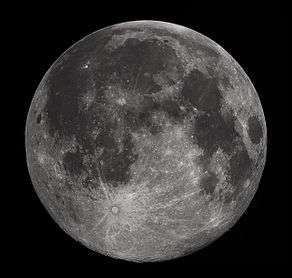Lunar Expeditionary Complex
The LEK Lunar Expeditionary Complex was a lunar expedition and moonbase proposed by Valentin Glushko in 1974 as a Soviet response to the United States' Apollo program and as successor of Zvezda moonbase that based on closed N1-L3 manned moon expedition program. If implemented, it was intended to have been operational by 1980 and used for scientific and engineering research.
Hardware
The Vulkan-LEK project based on new superheavy launcher developed in Glushko's bureau.
The moonbase design consisted of a number of modules, including:
- Lunokhod, an 8-ton pressurized lunar rover to be used to build the base and for expeditions.[1]
- The LZM ("Laboratory-Factory Module"), a 15.5-ton pressurized module to be used for oxygen production and scientific experiments.
- The LZhM ("Laboratory-Habitation Module"), 21.5-ton habitation module where cosmonauts were to reside.
- A nuclear power station to provide electricity.
- A simple transport vehicle to ferry supplies to and from a lunar orbit.
Project termination
The project was cancelled in 1976 when an Academy of Sciences Commission ruled that resources should be targeted toward projects primarily adding economic value rather than for national prestige.
See also
References
- ↑ "Lunokhod LEK". www.astronautix.com. Retrieved 2008-02-05.
External links
- the LEK Lunar Expeditionary Complex at astronautix.com.
- Entry at russianspaceweb.com.
This article is issued from Wikipedia - version of the 12/21/2015. The text is available under the Creative Commons Attribution/Share Alike but additional terms may apply for the media files.

